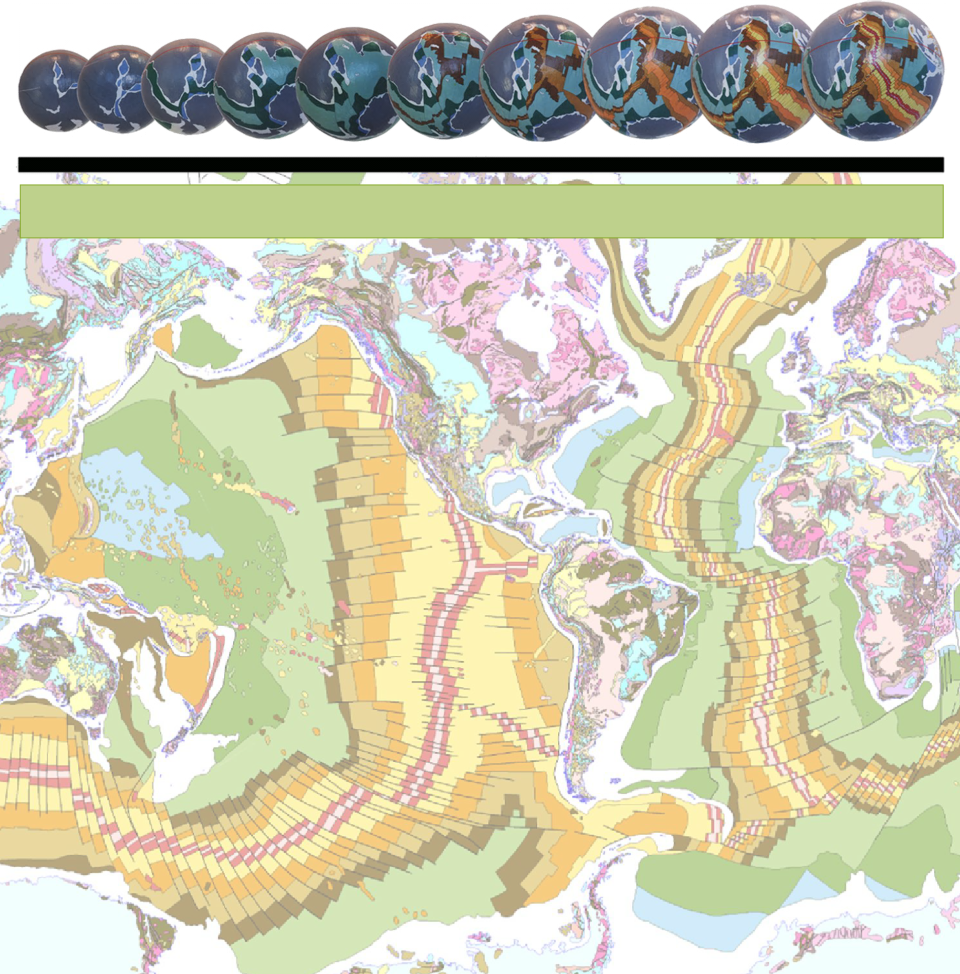

WHAT IS EXPANSION TECTONICS?
Expansion Tectonics is a new way of looking at and using modern geological mapping and global evidence about the Earth. This modern mapping and evidence is used here to accurately reconstruct past assemblages of the ancient continents and oceans back in time with a precision never before attained. The small Earth model reconstructions presented here are based on an extensive modelling and data collation study as put fourth for my PhD dissertation. This dissertation is available for all interested persons to examine for themselves–see publications.
This new insight into modelling the ancient Earth uses seafloor geological mapping to constrain assemblages of the various seafloor crustal plates back to the early-
These Expansion Tectonic small Earth seafloor and supercontinental assemblages have never been achieved with such precision before, for any tectonic theory.
Expansion Tectonics (from the Late Latin tectonicus, from the Greek: τεκτονικός "pertaining to building") is a revolutionary new scientific theory that is used to describe, model, and reconstruct the large-
Expansion Tectonic theory builds on the largely historical Expanding Earth theory which was developed during the 19th and first few decades of the 20th century. This theory was extensively promoted by the late Emeritus Professor Samuel Warren Carey of the University of Tasmania, and modelled by Klaus Vogel of East Germany. The historical terms Earth Expansion, Expanding Earth, and Growing Earth refer to changes to the shape and size of the Earth, as well as the motions of the various crusts on an Earth whose surface area increases with time in accordance with an increase in Earth radius.
These terms are synonymous and, based on the extensive modern global data used in this study, I have introduced the all-
Unfortunately, history has shown that, just like the lack of acceptance of the continental drift theory prior to 1950, the scientific community rejected the expanding Earth theory during the pre-
Rejection of the expanding Earth theory is now well over half a century old and, regardless of the vast amount of modern data available in support of Expansion Tectonics, most scientists today still adhere to this rejection. This is because, accepted consensus of opinion does not allow scientists to challenge the fundamental basis of plate tectonic theory in order to resolve the Earth radius dilemma once and for all.
This hypocrisy can be likened to stepping back to the 1960s where one can just as easily find argument to say that the Internet would never work. Why, because there was no mechanism to store the megabytes of data required to operate the system? Time has now shown that storing everything from Gigabytes to Geopbytes of data has been resolved, so finding a mechanism for an increase in Earth mass and radius is now well within our present grasp.
Emotive reaction, personal opinion, or gut instinct is not a scientific basis for rejection of any theory, in particular without backing up the rejection with valid scientific observation.
